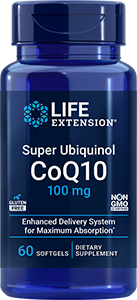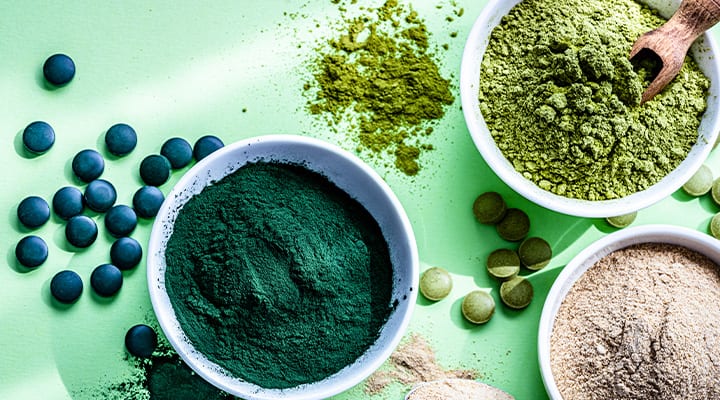
3 Nutrients That Help Your Body Make More Energy
Published: May 2020
Some days, you feel like you could take on the world. Other days, it’s a small victory if you can take your puppy for a walk without him walking you. If your body’s energy levels are a mystery to you, you’re not alone.
There is truth to the expression, “food is fuel,” but the process that transforms our dietary carbohydrates, sugars and fats into get-up-and-go is complex. Learn about how our cells convert what we eat to get a better understanding of what to consume to help your body make more energy.
Meet ATP, Your Energy Machine
To understand how you can maximize your body’s energy-making potential, it’s first important to understand how you make energy in the first place. A lot goes into transforming your AM oatmeal into all-morning-long oomph.
By “a lot,” we’re not talking about the amount of oats in your bowl; we’re actually referring to the different processes within your cells, which convert the nutrients in all of the food you eat into adenosine triphosphate, or ATP, which in turn gives energy to your brain, heart and other organs and tissues. ATP is the super-fuel that allows our bodies to take power from the foods we consume.
Level Up: 3 Ways to Supercharge Your Energy
So how do you maximize ATP? There are 3 specific nutrients that rev up your cellular processes so they can more efficiently transform your food into fuel:

Conquer More with CoQ10
The more CoQ10, or Coenzyme Q10, available within your bloodstream, the more cell energy mitochondria can produce. You can find CoQ10 in foods including organ meats, fatty fish, legumes like lentils and peanuts, and some fruits.
If a liverwurst-and-lentils casserole isn’t typically on your menu, nutritional supplementation is also an option; you’ve probably seen bottles of CoQ10 online or in your grocery store.
But not all types of CoQ10 are created equal. Ubiquinol CoQ10 absorbs better than the more common, already-oxidized form called ubiquinone—up to 8 times better. Because it’s easier to absorb, ubiquinol is the ideal CoQ10 for cellular energy support. You can find ubiquinol in foods, but the amount of broccoli, oysters, avocados and other ubiquinol-rich foods you’d need to consume would be impossible for most people to achieve, unless they were in a food-eating contest!
Explore Our Best Energy Management Supplements

Mad About NAD+
The cellular compound NAD+, or nicotinamide adenine dinucleotide, helps transfer energy from your food to your cells—where it can be converted to ATP.
You’ll find higher levels of NAD+ in foods like whole grains (that morning bowl of oatmeal), dairy, yeast, mushrooms and green vegetables. There’s also evidence that exercise and cutting down on alcohol consumption will boost your NAD+ levels.
Like CoQ10, NAD+ is available in nutrient form. In addition, you can help increase your NAD+ levels by taking a novel form of vitamin B3 called nicotinamide riboside.

Keep the Pep in Your Step with PQQ
Getting older can mean shrinking postures, fuzzy memories…and, unfortunately, depleting energy levels. That’s because the number of our cellular mitochondria—needed to create ATP—decline over time.
But age can be merely a number if we have sufficient levels of the nutrient PQQ(pyrroloquinoline quinone), which encourages new mitochondrial growth. You’ll find PQQ naturally in plant-based foods, particularly kiwi and papaya. It’s also available as a supplement.
In addition to these important nutrients, energy and adequate sleep may help add a little more spring to your step. So, follow these tips, and get ready to take on the world…or at least, that morning walk with your four-footed friend.
References
- Kaneka Corp. Unpublished study. 2007.
- NPJ Aging Mech Dis. 2017;3:17
- J Pharmacol Exp Ther. 2008;324(3):883-93
- Neurobiol Aging. 2013;34(6):1581-8
- J Biol Chem. 2010;285(1):142-52.
- Biochemistry. 2017;56(50):6615-6625
- Chowanadisai W, Bauerly KA, Tchaparian E, Wong A, Cortopassi GA, Rucker RB. “Pyrroloquinoline quinone stimulates mitochondrial biogenesis through cAMP response element-binding protein phosphorylation and increased PGC-1alpha expression.” J Biol Chem. January 2010. https://pubmed.ncbi.nlm.nih.gov/19861415/
- Pacheco, Danielle. “Excessive Sleepiness.” Sleep Foundation. February 2021. https://www.sleepfoundation.org/excessive-sleepiness
- “Coenzyme Q10.” Mayo Clinic. November 2020. https://www.mayoclinic.org/drugs-supplements-coenzyme-q10/art-20362602
- “NADH Overview.” WebMD. https://www.webmd.com/vitamins/ai/ingredientmono-1016/nadh




